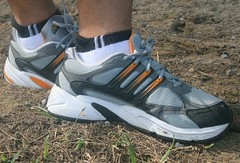WHY PHYSICAL (MECHANICAL) DIGESTION?
To break down food into smaller pieces. This increases the surface area of the food, hence facilitates chemical digestion by the enzymes.
HOW DOES IT OCCUR IN HUMAN?
It occurs in two ways:
To break down food into smaller pieces. This increases the surface area of the food, hence facilitates chemical digestion by the enzymes.
HOW DOES IT OCCUR IN HUMAN?
It occurs in two ways:
- CHEWING action by the mouth with the help of the teeth.
- PERISTALSIS - This is the alternate contraction and relaxation of the circular muscles and the longitudinal muscles along the digestive tract. Apart from breaking down food physically, peristalsis also helps to move food down the digestive tract.
Note: Not only the oesophagus has these antagonistic set of muscles. The same set of muscles are also present in the stomach, and the intestines.
The following figure shows these antagonistic muscles as found in the oesophagus.
REMEMBER AGAIN: At the end of any physical digestion, the food is only changed physically but not chemically. For example, protein will still be protein, and starch will still be starch at the end of physical digestion.
The following figure shows these antagonistic muscles as found in the oesophagus.

REMEMBER AGAIN: At the end of any physical digestion, the food is only changed physically but not chemically. For example, protein will still be protein, and starch will still be starch at the end of physical digestion.
